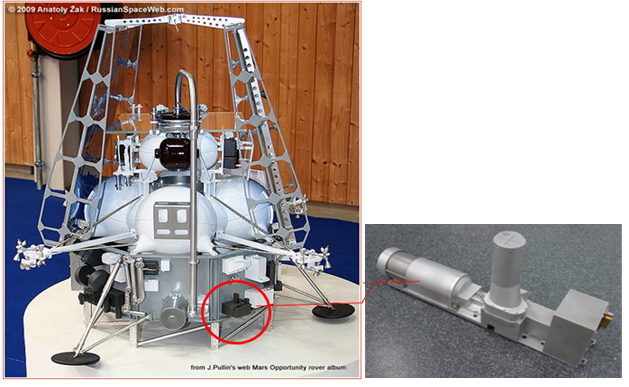Upon the invitation of the Russian Space Agency in 2005, Prof. K. L. Yung, Associate Head of Department of Industrial and Systems Engineering, and his team, have designed and manufactured an instrument, called Soil Preparation System (SOPSYS) for a joint China-Russia mission to Mars. This Phobos Grunt mission was set to process in-situ soil samples from Mars innermost moon called Phobos, and the PolyU-made instrument could grind and sift Phobos rock to the size of less than one millimeter in diametre. Though the mission, launched in November 2011, had failed, the invaluable research experience has led to advancement in science and technology. In this issue, Prof. Yung will share with readers his personal witness of this historic episode in space research.
1/ What was the objective of the Mission?
The Phobos Grunt (which stands for Phobos Soil in Russian) Mission aimed at in-situ analysis and bring soil from Phobos to Earth to study the origin of the solar system and the condition during the formation of Mars. The Mission was notable also because China’s first Mars satellite, Yinghuo-1, was launched on the Russian spacecraft.
 |
| Phobos-Grunt Lander |
PolyU-made instrument - Soil Preparation System |
2/ Can you share with us your first-hand experience about witnessing the launch of Phobos Grunt?
I was invited by the Russian team to witness the launch of Phobos Grunt. The trip started with a flight to Moscow on 7 November 2011. I stayed there with the ESA (European Space Agency) and Russian team for one night, and the next morning, we went to a secured airport, the Vnukovo-3 airport, to take a special flight to Baikonur with other delegates including part of the Chinese delegation.
Although Baikonur is in Kazakhstan, the whole area including the airport was controlled by the Russian military. There was only basic facility at the airport, and we had to stand in the cold outside at under -14 degree Celsius to queue up for immigration and security clearance.
But a few hours later at around 10 am, we rushed to the airport for a flight back to Moscow and then we heard about the navigation problem with Phobos Grunt. Its star sensor was pointing to the sun and blinding the sensors such that its upper-stage rocket was unable to ignite over South America to put it into the Mars orbit.
3/ Can you explain further the problems occurred?
The situation of Phobos Grunt was quite complicated because it had two navigation systems, one new and one old. The Russian Federal Space Agency, commonly called Roscosmos, originally planned to use the new system. However, for some reason possibly because they thought that the old system was more reliable, they changed the plan in the last minute and used the old system. It had led to the situation that the upper-stage rocket was scheduled to fire over South America at a position Roscosmos had no tracking capability and hence did not even notice it when something went wrong and took corrective action. Subsequently, Phobos Grunt was stuck in a low earth orbit and was travelling very fast. Hence, Roscosmos would have very little time to communicate with Phobos Grunt and alter its software and control even when it passed over Baikonur again. Eventually, the spacecraft crashed back to Earth on 15 January 2012.
4/ What could be the reasons for the failure of Phobos Grunt?
According to the investigation report on Phobos Grunt’s failure, the Russian concluded that “A computer glitch was responsible for the failure of the Phobos-Grunt sample-return mission to the Martian moon Phobos”. They put the blame on solar radiation, and pointed that “The microelectronic hardware, unlike the electronic hardware used in Fregat upper stages, was foreign-made and of bad quality”.
5/ Is there any possibility to launch the Phobos Grunt again?
As far as Roscosmos is concerned, the most expensive investment is the development of the frigate and the lander, while the rocket is a consumable that does not cost a lot. And, in every mission there is a backup, for instance, when our research team at PolyU delivered the Soil Preparation System, we had to deliver two flight qualified models, one called the Flight Model and another the Flight Spare. Therefore, there is always a chance for Roscosmos to launch Photos Grunt again. Currently there seems to be talks between Russian Space Agency and ESA about combining the ExoMars program of ESA and put most of the Phobos Grunt’s instrumentation on it.
I believe that the knowledge we have accumulated from the research over the years will be useful for future scientific development. I think no other university in Asia has got the experience that PolyU has in relation to actual space missions.
|